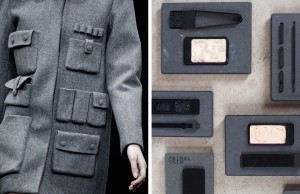The article “His & Hers: Designing for a Post-Gender Society” by Suzanne Tick speaks on the topic of design and its relation to gender and the somewhat new lack of separation between male and female. Tick starts off by pointing out how there are no longer distinctly defined genders, but instead there is male, female, and everything that lies somewhere in the middle of the two. She believes that it is a designer’s duty to promote acceptance and change where it seems necessary in society to accommodate all of the people who identify between male and female..
Suzanne Tick continues on with her views on today’s designs. Landscapes are still very modern, which she says is driven by men’s perception. Offices and such, where it has typically been a man’s place of work, are designed in a way to appeal to a man’s wants and needs for that space. Tick says that even the designs in the world of technology are affected by there being male dominance in that industry.
Then she goes on to talk about the movement for gender sensitivity and equality, the He for She Movement. It is a movement that entreats men to help work towards gender equality around the world. Another related movement towards equality is the LGBTQ rights movement that has made it legal for same-sex marriage. Suzanne Tick says “Masculine and feminine definitions are being switched and obscured.”(Tick, Line 57).
With women becoming more prominent, treatment in the work place has become more equal. This means designers have to figure out how to design layouts that are more gender sensitive now. Including making alterations in the work place such as letting more light in and adding more softness to the layout. Building designs have to accommodate males and females now.
Suzanne Tick says that fashion and beauty are the first areas to undertake the changing trends that come from gender roles becoming unclear. Clothing items are becoming more gender neutral because of the changes in self-identification, and some designers have already taken a step in that direction. Tick recognizes Alexander Wang for his women’s winter coat for it having a masculine edge to it, and she also recognizes Annemiek van der Beek’s for her primal skin makeup because it was made so men are be able to use it too. These two examples show how easy it is to accommodate people who identify as male, female, or anything in between.
Suzanne Tick points out that androgyny is very familiar to most people today. It is not uncommon to see a person and not be sure if he is a he or if she is a she. It used to be that transgenders were not accepted in society. Now, schools are allowing students not to put their gender down if they would not like to. Some accommodations are being made for transgenders because they are no longer as rare as they used to be and are no longer such outcasts. The lines between men and women and between masculine and feminine are slowly fading away as people identify themselves differently.
Gender neutrality has become very important with today’s society. Designers are now creating less gender specific clothing, schools are making accommodations for transgenders, and some places are even getting unisex bathrooms. Suzanne Tick believes accommodations should be made so every person can feel like they belong, and that people should not be forced to choose a gender.
Suzanne Tick. “His & Hers: Designing for a Post-Gender Society”. Metropolis. Metropolis Magazine, March 2015. Web. 14 Feb. 2016.
